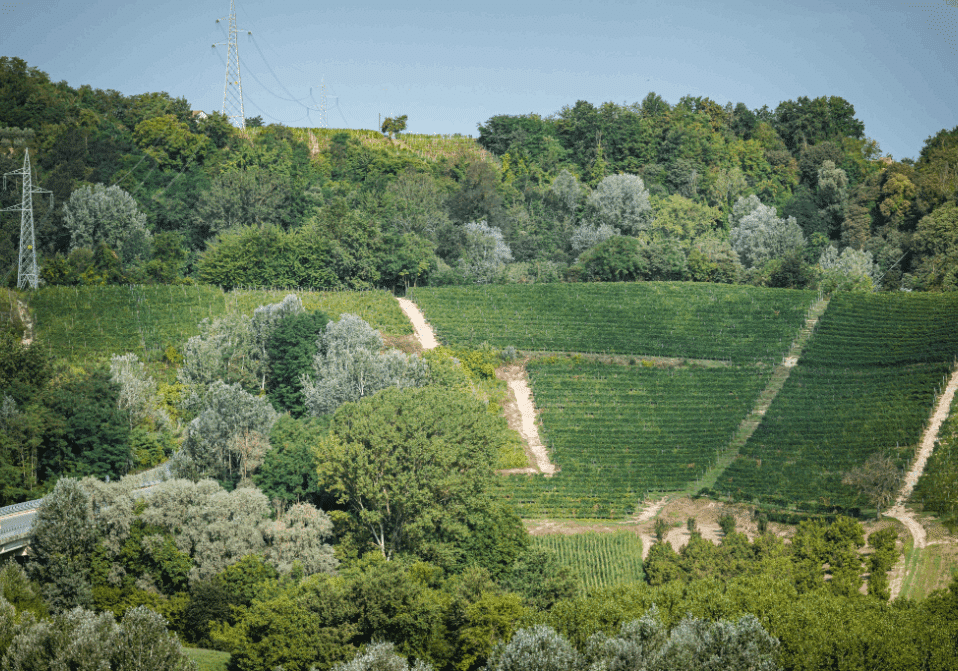Montà d’Alba, Roero: our land
Montà, the northern area of Roero. Here, we own 23 hectares with the best positions and exposures.
The Montà area is divided into two main terroirs:
- The north side, more elevated, with a sandy-rocky soil and a high level of acidity, ideal for Arneis.
- The south side, with more limestone and rich in nutrients for the vines, ideal for Nebbiolo.
This double soul makes Montà the perfect place to produce both tasty and mineral white wines and structured and elegant red wines.
Acidic - sandy soil
In the North – West part of the region, at almost 400 meters of altitude, the soil is 80% sandy, acidic (5.5 pH) and very draining. It has a marine origin and can be mixed with clay veins, rich of mineral salts.
This is the ideal terroir for white
varieties.

Acidic - sandy soil
In the North – West part of the region, at almost 400 meters of altitude, the soil is 80% sandy, acidic (5.5 pH) and very draining. It has a marine origin and can be mixed with clay veins, rich of mineral salts.
This is the ideal terroir for white
varieties.
Fossil - marine soil
At lower altitudes, the sandy soils are older (3.5 millions year) and full of fossils (shells, leaves). This is ideal for light, saline reds loaded with personality and nuances.
When this terroir is mixed with limestone and clay, you can find the perfect condition for more structured, imposing Nebbiolos.

Fossil - marine soil
At lower altitudes, the sandy soils are older (3.5 millions year) and full of fossils (shells, leaves). This is ideal for light, saline reds loaded with personality and nuances.
When this terroir is mixed with limestone and clay, you can find the perfect condition for more structured, imposing Nebbiolos.
One region, two souls.
The perfect place for Arneis and Nebbiolo.
The north side of Montà, locally known as Fini superiori, hosts the historic vineyards of Arneis, 45 to 60 years old, while the south side, the so called Fini inferiori, hosts the Nebbiolo vineyards, grown from the 1990’s.
Arneis grows on acid (pH 5.5) sandy soil at a height of 390 m. This is a panoramic site of Roero and of the whole southern Piedmont: The consistent wind, exposure, altitude and acidity of the soil are the fundamental factors which create the vibrant, fresh and bright style of the Almondo Arneis.
On the other hand, Nebbiolo gives its best on the Sabbie d’Asti (the sands of Asti), lower grounds (230-280 m.) with 30% of limestone.
Two different terroirs, two unique grape varieties.












